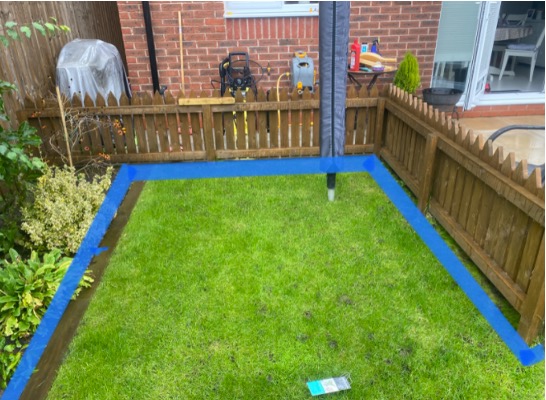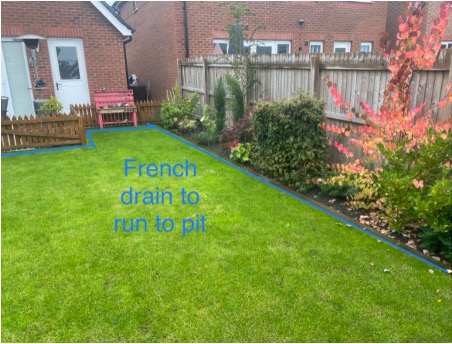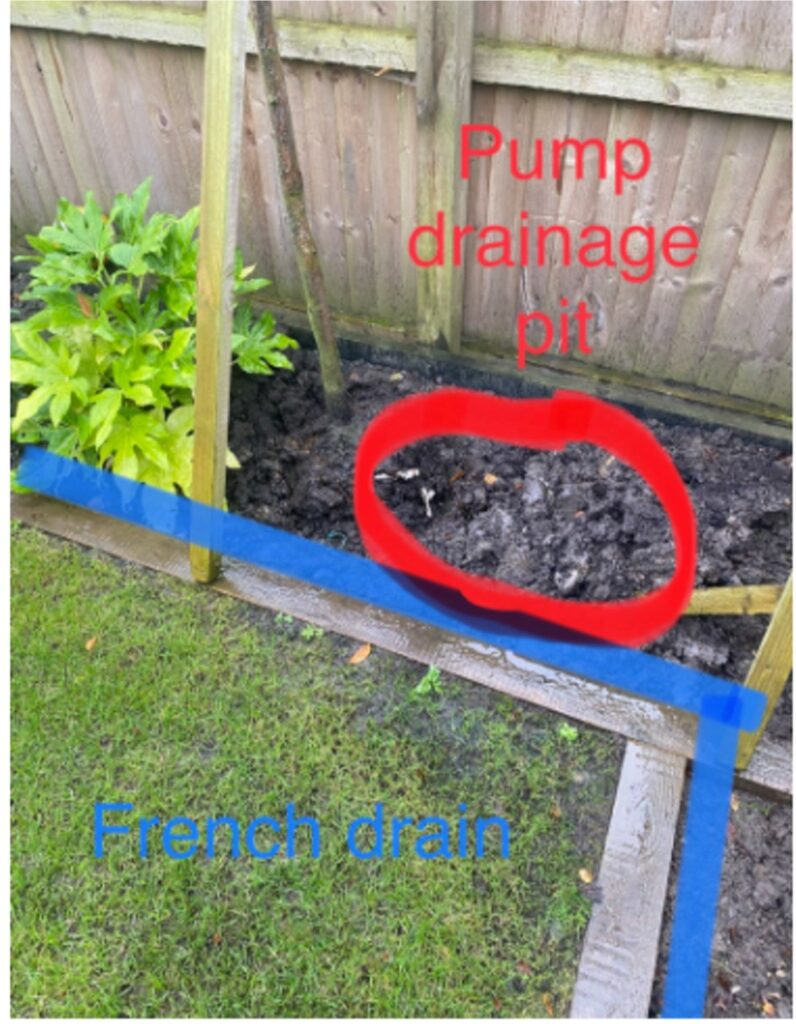We attended this property in order to discern the contributing factors relating to the poor drainage of the customer’s garden. We then compiled a report with consideration of all factors affecting their current situation and reviewed the background history of the property. Our objective was to summarise the cause of any flooding and offer potential solutions as a way forward for the homeowner.
We have extensive experience of diagnosing garden drainage problems, identifying the causes of waterlogged ground and devising a suitable solution. All problem gardens are assessed individually for a bespoke solution whilst considering all the potential contributory factors.
Only once we understand the effects of variations of soil types/inclines/geographical locations/land activity would we specifically design a drainage solution.
Findings
When observing the very recent history of the area it was noted that the use of land was previously farmers’ fields. Briefly, the below the turf conditions appeared to be of good quality and should provide adequate drainage for the lawn. We looked at nearby geological information and can understand that the sub soil ground conditions were notably clay. Clay has benefits as it can provide vital nutrients for lawn growth, however it is notorious for causing standing water as it will retain water due to its dense properties. Waterlogging can then cause a negative impact on plant life as it will prevent oxygenation.
To refer back to the history of the area, previously a large pond was filled nearby where the current development sits. We could then assume that water would naturally fall from the surrounding fields into this area. As new properties have since been built, natural flow of water had become reduced and standing water was inevitable. We know climate change is also contributory as there has been an increase in annual rainfall.
Consequently, the landscaping works previously completed were also preventing water to naturally disperse away from the garden. The sleepers which had been installed were essentially creating a ‘damn’ effect; water was concentrating in the low points of the lawn.
Resolution
The objective was to work with environmental, geographic and implemented factors to resolve water logging issues so that outside areas could be properly enjoyed.
As there was not one single factor to contend with, it was recommended that we install several preventative measures whilst also looking at how the existing landscape could be improved.
Firstly, we recommended that the sleepers needed to be removed, a small trench needed to be excavated in their place, lined with a geotextile material and filled with a 20mm gravel for the sleepers to be placed on top. This allows movement of water and thus prevents an accumulation of standing water.
A further recommendation was to have a pumped drainage system in place. In our experience this is the only effective way to actively remove standing water as well as reduce the water table in the area. The pump was to be situated at the lowest point where pooling is at its worst at the lowest point of the garden. We further recommended the installation of 45 meters of French drain. These are most effective if placed in a ring main formation around the perimeter and following the contours of the lawn. The ideal position would be behind the sleepers in the boarders. Alternatively, these could have been placed in the lawn next to the sleepers but may not be as effective.
We ran a discharge pipe from the pump to the nearest rainwater gully. We recommended an outside socket to be installed near the gully. Where possible we used moling technology to keep disruption to a minimum. Surplus was removed from site via a skip, located on the drive.
Our system is a gradual solution, and it can take, up to, 6-12 months before the full effects can be seen. The submersible pump should always be on to continuously lower the water table as well as remove surface water.



